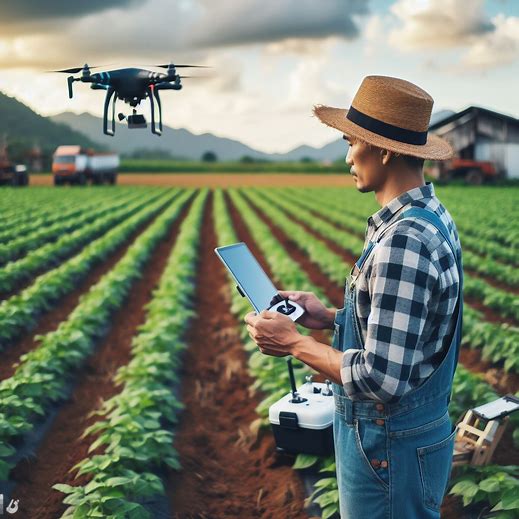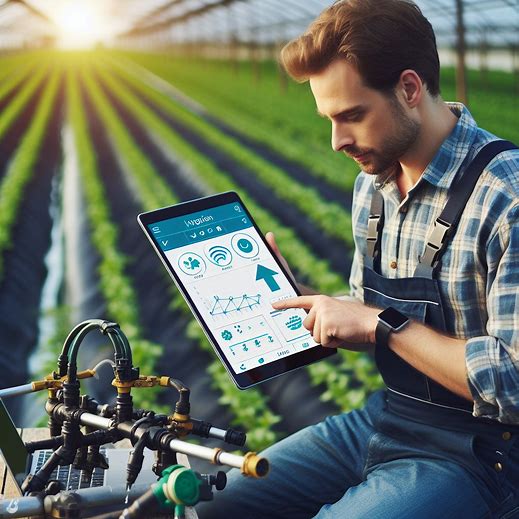Agricultural efficiency is a key factor for the success and sustainability of farms. In 2024, farmers are facing increasing challenges and opportunities to optimize their operations, increase their yields, and reduce their costs. One of the most promising solutions to achieve these goals is precision farming, a technology-based approach that uses data and automation to enhance farming management. In this blog post, we will explain what precision farming is, how it works, and what are its benefits for agricultural efficiency.
What is Precision Farming?
Precision farming is a farming system that uses data and technology to measure, monitor, and manage the variability of crops, livestock, and fields. Precision farming aims to:
Apply the right amount of inputs, such as water, fertilizer, and pesticides, at the right time and place, to optimize resource use and minimize waste.
Collect and analyze real-time data on crop health, growth, and performance, to detect and prevent potential issues, and improve decision-making.
Automate and streamline farming tasks, such as planting, cultivating, and harvesting, to reduce labor costs and human errors, and increase accuracy and efficiency.
Precision farming relies on various technologies, such as sensors, drones, satellite imagery, GPS, variable rate technology, robotics, and data analytics, to collect, process, and act on data. Precision farming can be applied to different types of crops, livestock, and farming systems, depending on the needs and goals of each farm.
How does Precision Farming Work?
Precision farming works by following a cycle of four steps: observe, decide, act, and evaluate.
Observe: This step involves collecting data on the field and crop conditions, using sensors, drones, satellites, or other devices. The data can include information on soil moisture, nutrient levels, crop health, growth stage, yield potential, weather, and pests.
Decide: This step involves analysing the data, using software, algorithms, or artificial intelligence, to generate insights and recommendations. The analysis can help farmers to identify the optimal inputs, timing, and methods for each crop and field, and to adjust their strategies based on the changing conditions.
Act: This step involves implementing the recommendations, using automated or manual equipment, such as tractors, planters, sprayers, or harvesters. The equipment can be guided by GPS or other technologies, to ensure precision and accuracy in the application of inputs and the execution of tasks.
Evaluate: This step involves measuring the results and outcomes of the actions, using data and feedback, to assess the performance and efficiency of the farming system. The evaluation can help farmers to learn from their experience, and to improve their practices for the next cycle.
By following this cycle, precision farming enables farmers to optimize their farming management, and to achieve higher efficiency and productivity.

What are the Benefits of Precision Farming for Agricultural Efficiency?
Precision farming can bring various benefits for agricultural efficiency, such as:
Saving money and resources: Precision farming can help farmers to use their inputs, such as water, fertilizer, and pesticides, more efficiently and precisely, and reduce their wastage and costs. For example, a study by the University of Nebraska-Lincoln found that precision irrigation can save up to 25% of water and energy compared to conventional irrigation1.
Improving productivity and profitability: Precision farming can help farmers to increase their crop yields and quality, and improve their market access and competitiveness, and ultimately boost their income and profitability. For example, a study by the University of Illinois found that precision nitrogen application can increase corn yields by up to 10% compared to uniform application.
Enhancing resilience and adaptability: Precision farming can help farmers to cope with the challenges and risks of climate change, pests, diseases, and market fluctuations, and improve their resilience and adaptability. For example, a study by the International Food Policy Research Institute found that precision farming can reduce the yield losses caused by drought by up to 20%.
Promoting sustainability and responsibility: Precision farming can help farmers to contribute to the global goals of sustainability, such as reducing hunger, poverty, and inequality, and protecting the environment and the society, and also enhance their reputation and responsibility as food producers. For example, a study by the European Commission found that precision farming can reduce greenhouse gas emissions by up to 10%.
Conclusion
Precision farming is a technology-based approach that uses data and automation to enhance farming management. Precision farming can bring various benefits for agricultural efficiency, such as saving money and resources, improving productivity and profitability, enhancing resilience and adaptability, and promoting sustainability and responsibility. In 2024, precision farming is not just a choice; it’s a necessity for farmers who want to optimize their operations, increase their yields, and reduce their costs. Join us in exploring the impact of precision farming on agricultural efficiency, and how it can help you achieve your farming goals. In the precision farming revolution, the harvests of tomorrow are more than a promise—they’re a data-driven reality.



